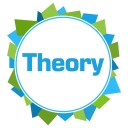There are two connected dimensions of self-leadership:
1. Self-awareness or self-knowledge
2. Personal mastery
1. Self-awareness
Self-awareness is the acquisition, or willingness to acquire, a clear understanding of the patterns of our own thinking and behaviour. If we don't know ourselves well enough, selfcontrol will often seem difficult.
We are born with a genetic predisposition to certain behaviours (our personality), but these are modified, enhanced, limited or distorted by experience. Recognising our own patterns of neurology, language and behaviour in order to use them effectively, or modify them if they are ineffective, enables leaders to respond flexibly and to extend their capabilities.
We can deepen our understanding of self through:
- Self-observation and reflection (including reflection with peers or mentors);
- Using profiling instruments such as the MBTI® which enable us to identify our patterns of preferred behaviours;
- Seeking, noticing and being attentive to feedback on our performance and the way we are viewed by others.
2. Personal Mastery
The essence of personal mastery is the discipline of being able to consistently make the choices that are not only effective in the situations you confront but also congruent with who you are and what you stand for.
In the writing of Peter Senge1, the essentials of this discipline are:
- Developing personal vision (knowing what you really want, your own inner purpose).
- Committing to truth – an uncompromising willingness to know and face reality.
- Holding your vision and the present reality in creative tension. This may involve focusing
your energy, making consistent choices, patiently accepting limitations and exploring
possibilities.
Senge's writing is influenced by the work of M. Scott Peck2 who describes the four elements of personal discipline as:
- Delaying gratification: Sacrificing present comfort for future gains.
- Acceptance of responsibility: Accepting responsibility for one's own decisions, choices and actions.
- Dedication to truth: Honesty, both in word and deed, and willingness to face reality.
- Balancing: Handling the inevitable internal conflict inherent in being human and fallible.
Timothy Gallwey,3 who writes about the "inner game", adds one other dimension to our understanding of personal mastery. Our internal dialogue, our self-talk, internal imaging, lapses in focus or limiting assumptions are often self-imposed boundaries on our own performance. Learning to replace negative self-talk with positive confidence in our own leadership identity, and allowing our developed intuition to work without self-doubt, are also essential aspects of self-leadership.
1 Peter Senge, 'The Fifth Discipline Field Book', 2000.
2 M Scott Peck, 'The Road Less Travelled', 1978.
3 Tim Gallwey, 'The Inner Game' series










